
Princess Jeanne of France was born on the 23rd of April 1464 (died on the 4th of February 1505) to King Louis XI of France known as the Cunning (le Rusé) or the Universal Spider (l’Universelle Aragne) and his second spouse, Charlotte de Savoy. Jeanne was the 5th couple’s child and the 2nd surviving daughter after the birth of Princess Anne (Anne de Beaujeu) in 1461. Jeanne first saw the world at the castle of Pierre II de Brézé (a supporter of her grandfather, King Charles VII of France the Victorious, or le Victorieux), at Nogent-le-Roi in the County of Dreux. King Louis XI must have been upset with the birth of another girl due to the Salic law in France, which prevented princesses and their male descendants from ascending the throne of France.
Unfortunately, Jeanne was born sickly, with a fragile constitution and deformed. Since early childhood, the girl had a noticeable hump on her back and walked with a limp, so she had curvature of the spine. As her father strove to extinguish the Valois-Orléans line, he had Jeanne betrothed at the age of 2 to her 2nd cousin – Louis II, Duke d’Orléans (later King Louis XII of France). Louis d’Orléans was the only son of the prince-poet Duke Charles d’Orléans (he spent about 25 years in English captivity following the Battle of Agincourt of 1415), and his third spouse, Marie of Cleves. Louis was aged 2 at the time; Louis XI was actually the boy’s godfather.
His daughters, Jeanne and Anne, were entrusted to the care of Baron François de Linières and Anne de Culan. The childless spouses loved the girls as their own offspring, especially Jeanne who possessed a gentle and almost angelic character. Unlike her sister, Anne demonstrated her formidable strength of will, which eclipsed that of Jeanne, of most other women, and of even men, as history would prove in years to come. The girls were given lessons of poetry, literature, painting, mathematics, astronomy, as well as traditional things for aristocratic girls such as embroidery, how to run a household, and how to play the lute and other musical instruments. In 1470, their parents finally had a healthy son – Dauphin Charles (future King Charles VIII of France), who nevertheless was raised under the monarch’s personal guidance separately from the princesses.
King Charles VII of France was one of the favorite nephews of Prince Louis de Valois, Duke d’Orléans, who was assassinated on the orders of Jean the Fearless, 2nd Valois Duke of Burgundy. Due to the legitimate sons of Louis d’Orléans being in English captivity after Agincourt, Charles VII became the leader of the Orléanist-Armagnac faction during a devastating civil war in France. In fact, Charles VII became the ideological heir of the Marmousets (competent ministers of his grandfather, Charles V of France), who had been persecuted by Charles VI’s uncles after the first onslaught of Charles VI’s madness in 1392. Charles VII implemented effective reforms in the government, many of which had been offered by the Marmousets and later by Louis I d’Orléans.

Louis XI had a very strained relationship with his father and rebelled against him, wishing to have all power as soon as possible. Someone might disagree with me, but I believe Louis XI never appreciated that Charles VII had expelled the invaders, which allowed Louis to inherit the realm in peace and rule without significant external threats. In actuality, the ideas of the Orléanists saved France, reformed the economy and the army, and allowed to win the Hundred Years’ War. However, Charles VII’s son detested the Orléanists to a point that he could barely tolerate Charles d’Orléans after the man’s return from captivity. Louis XI had the same feelings for Charles’ son.
Perhaps King Louis XI saw potential competitors in the Valois-Orléans branch of the House of Valois. Maybe he was rather wary of political factions in general, knowing the history of the Burgundian-Armagnac War in France. Regardless of anything, Louis XI dreamed to get rid of this branch by compelling his young Orléans cousin to marry his handicapped and potentially sterile daughter. The papal dispensation was granted by Pope Sixtus IV in the winter of 1476. On the 8th of September 1476, Louis II d’Orléans married Princess Jeanne at Château de Montrichard.

At the time of the wedding, the Duke d’Orléans was still a teenager, but he must have been unhappy about this wedding, and as he was intelligent, he comprehended why he was forced into this union. Jeanne must have been feeling miserable, seeing that the bridegroom disliked her a lot. In 1473, Princess Anne married Pierre de Bourbon (later Duke Pierre II de Bourbon). The dowry for each of the princesses was fixed in their marriage contracts – it amounted to 100,000 gold crowns. In Jeanne’s case, some historians think that a substantial dowry was necessary to partly compensate for Jeanne’s defective physique. Others believe that the two sisters received the same dowry. However, no dowry could make the marriage of Jeanne and Louis happy.
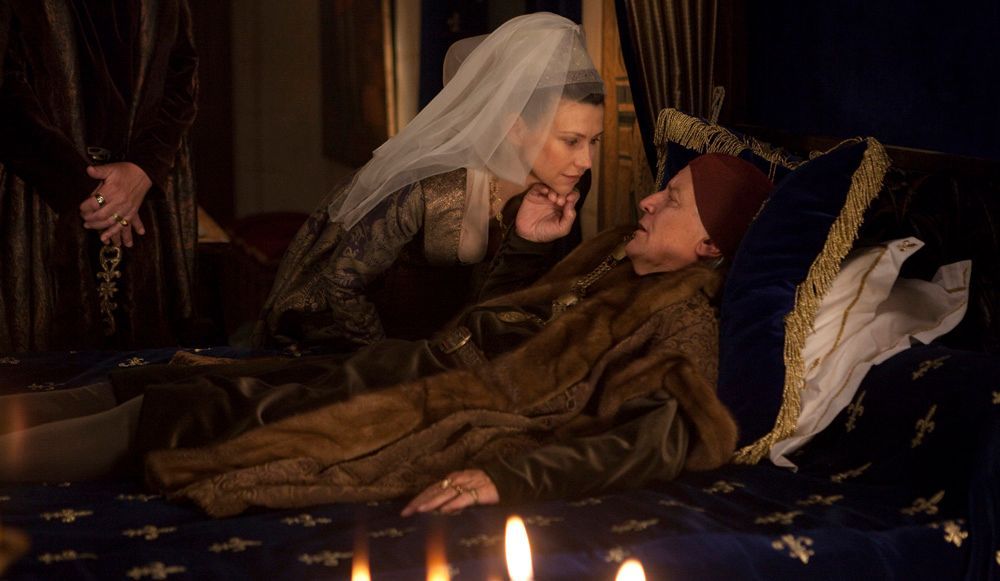
Louis d’Orléans took his unwanted wife to Château de Blois, one of the many possessions of the House of Orléans at the time. In Blois, Louis introduced his wife to the local population, and then they separated. Jeanne, who was extremely pious, spent her days in prayer in chapel and with her Books of Hours. Her husband led a separate life and had affairs as Louis grew up. We do not know for a certainty whether the marriage was consummated immediately after the wedding. Even if it was not, it was highly likely that the cuple did it later. In his desire not to let the Valois-Orléans line to ascend to the throne, Louis XI would have made Louis and Jeanne have intercourse, for the non-consummation of a Catholic union is one of the grounds for its annulment.
The young duke’s detestation was so colossal that King Louis XI had to remind his cousin to visit his wife. Jeanne and Louis even lived in different castles! This nightmare for poor Jeanne lasted until Louis XI’s demise in 1483. He was succeeded by the 13-year-old Charles VIII of France. Jeanne journeyed to Amboise where she was reunited with her mother, Queen Charlotte, and Anne. Louis joined her at Amboise, hoping to dispute the late monarch’s will, according to which Anne and Pierre de Beaujeu were appointed the successor’s regents during his minority. Indeed, according to the ancient laws, the closest male relative became regent or guardian, but at times, monarchs or nobles bypassed this law and appointed someone else for these roles.
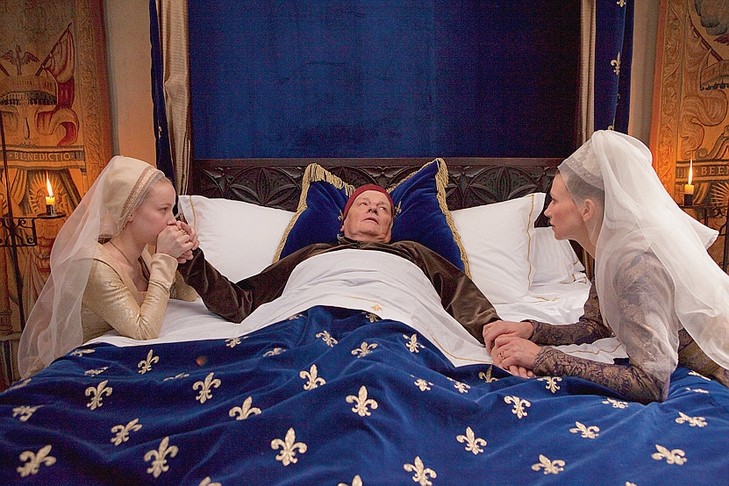
Louis d’ Orléans attempted to snatch away the regency, but his appeal to the Estates General was rejected. By the end of 1484, the Duke d’Orléans launched a series of military campaigns against the regents. The conflict of the leading magnates of the realm, headed by Orléans, is known as the Mad War (la Guerre folle) of 1485-88. Orléans’ allies included: Duke François II of Brittany; Duke René II de Lorraine; Alain d’Albret; Jean de Châlon, Prince of Orange; Charles, Count d’Angoulême, who was a cousin and friend of Louis d’Orléans. The duke tried to have his marriage to Jeanne annulled and sent a request to the Pope. Louis fled to Brittany to join his forces with Duke François, announcing that he wanted to marry Anne of Brittany, François’ heir.
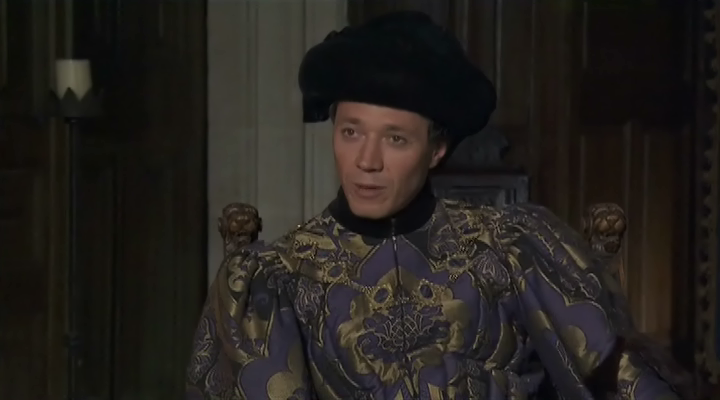
Imagine how horrible Jeanne de Valois must have felt at the time! Deserted by her husband who waged war against her own sister! This lasted until 1488 when the Dukes d’Orléans and of Brittany were declared insurgents by the Estates General of France. This made it possible for Anne and Pierre to treat them not as princes and vassals, but as subjects guilty of lèse-majesté. On the 28th of July 1488, the French armies defeated the Breton forces at the Battle of Saint-Aubin-du-Cormier. Orléans was taken prisoner; Duke François accepted a punitive treaty.
Jeanne was so noble-minded and kind to her cruel husband that she pleaded with Pierre and Anne to spare Louis d’Orléans. However, the duke was imprisoned. He was released only in 3 years after King Charles VIII had ended the regency of his relatives. Louis then accompanied his sovereign on his Neapolitan expedition, while his spouse lived on the money given by Anne because the Duke d’Orléans refused to provide for his wife’s needs. Jeanne experienced more humiliations from Louis after her brother’s death in 1498 without any surviving issue and after the ascendance of her husband to the throne of France under the name of Louis XII.
Immediately, the new King Louis XII embarked on a campaign to defame Princess Jeanne as such a handicapped woman that he failed to bed her. Louis could have tried to have their union annulled on the grounds of consanguinity, which was a typical excuse, but he did not. In truth, Louis needed to marry his predecessor’s widow, Duchess Anne of Brittany, to annex her lands, and not to admit the complete Habsburg encirclement of France. Louis described his wife’s physical deformities in detail and even claimed that her witchcraft prevented him from having intercourse. Jeanne defended herself and introduced witnesses who confirmed the consummation. I think that the unfortunate couple had intimacy at least once, and that Louis lied.
According to Jeanne, the Duke d’Orléans boasted that:
“He [Louis] mounted his wife three or four times during the night.”
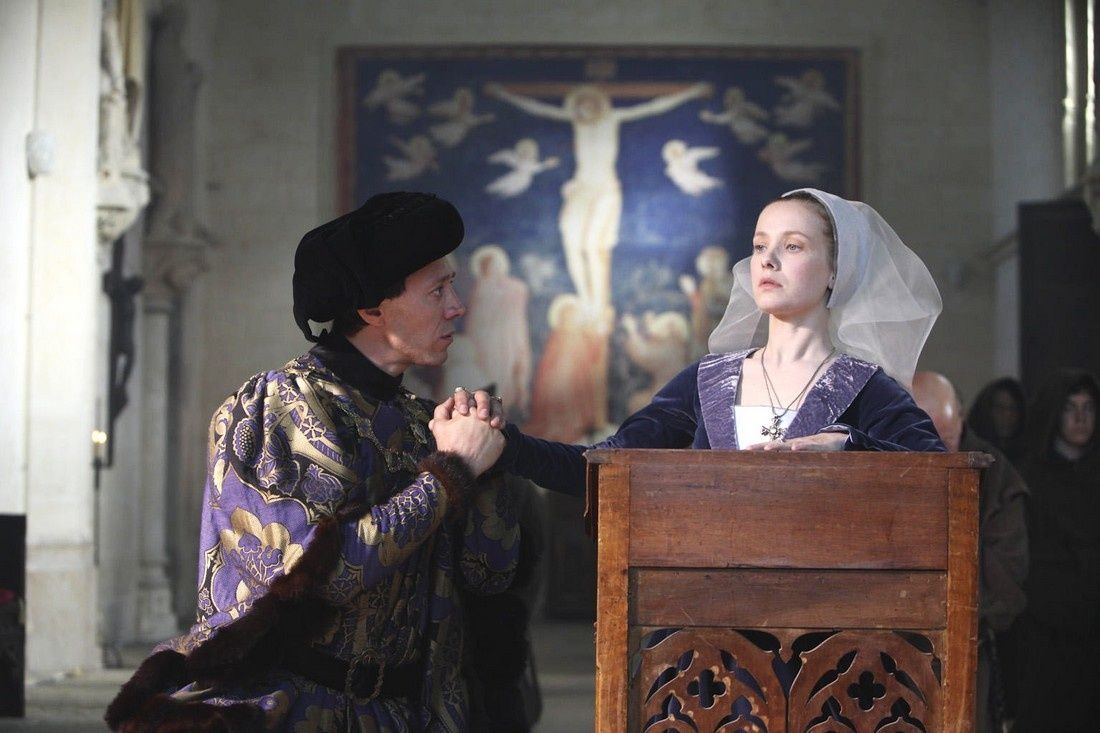
Jeanne became Queen of France, but it made her even more miserable. It was as if fate were laughing at the aspirations of Louis XI to extinguish the House of Orléans as a cadet branch of the ruling dynasty. The ecclesiastical tribunal organized a trial at Saint-Gatien Cathedral (Cathédrale Saint-Gatien de Tours) in Tours in August 1498. During the trial, the new ruler’s first marriage was called a forced and consanguineous one, conducted when the bride and bridegroom had not yet come of age, although in royal families younger couples often married. The main insult towards Jeanne was that she was unfit to “receive the virile seed.” Louis XII made a political deal with Pope Alexander VI Borgia, who declared their matrimony null and void in December 1498.
Poor Jeanne stepped aside, saying that she would pray for her former husband’s atonement. Once more, in my opinion, it proves that Louis d’Orléans told everyone falsehoods about the non-consummation. Jeanne should have stepped aside earlier to avoid this public shame and scandal, letting her spouse remarry and try to sire a male heir. Louis XII made his former wife Duchess de Berry in reward, and Jeanne retired to Bourges, the capital of her duchy. We do not know what she felt when Louis remarried Anne of Brittany in Nantes on the 7th of January 1499.
Having settled in her new duchy, Jeanne de Valois became a nun. Strictly speaking, she was always more suited for a monastic life than marriage. She created the Order of the Annunciation of the Blessed Virgin Mary. It was established as an independent branch of the Poor Clares. By 1500, she had received 11 postulants, some written personally by her and approved by Pope Alexander. Construction of the first monastery started the following year. On the 21st of November of 1504, on the Feast of the Presentation of Mary, Jeanne committed herself to the new Order.
What can be the reasons for Jeanne’s weak health and for the reproductive problems of her siblings? Bad luck, poor hygiene, and lack of proper medical care, as well as inbreeding. Jeanne’s parents – King Louis XI of France and Charlotte de Savoy – were cousins multiple times over. Her paternal grandparents were King Charles VII of France and Marie d’Anjou, who were second cousins. Her maternal grandparents were Duke Louis de Savoy and Anne of Cyprus, who were not closely related. Yet, the senior Valois line became so inbred by the time of Louis XI’s marriage to Charlotte that the death of their children, as well as the reproductive problems and bad health of two daughters and one son who survived into adulthood should not surprise anyone.
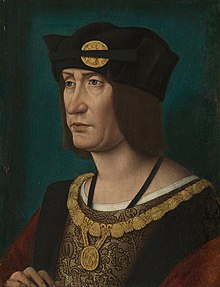
Ironically, King Louis XII had similar problems with his second wife, Duchess Anne of Brittany. Having failed to give her first husband progeny, Anne gave birth only to two daughters in her second marriage – Claude of France (sickly and with a limp) and Renée of France (healthy). Louis XII was descended from Louis de Valois, Duke d’Orléans, and his wife, Valentina Visconti (first cousins!) through his father, Charles d’Orléans. Anne of Brittany was a daughter of Duke François II of Brittany, and Marguerite de Foix. Duke François was a son of Richard of Brittany and Marguerite d’Orléans from the House of Orléans, who was a daughter of Louis I d’Orléans and Valentina Visconti. Louis XII had many blood connections with both of his spouses.
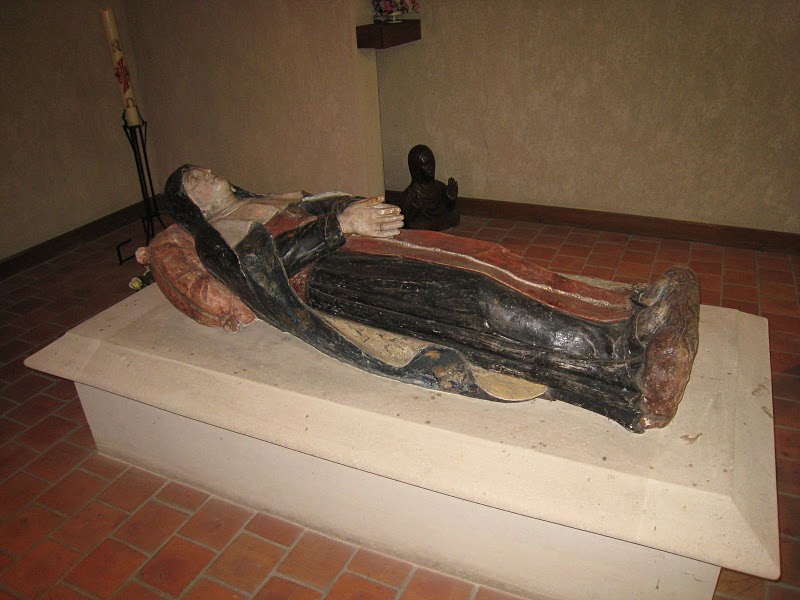
Jeanne passed away on the 4th of February 1505 at the age of 40. She was interred in the chapel of the Annonciade monastery. There was a legend that after her death, miracles, and healings attributed to her occurred. During the Wars of Religion in France, Jeanne’s grave was desecrated the Huguenots in 1562. Jeanne was beatified in 1742 by Pope Benedict XIV; in 1950, Pope Pius XII canonized her. The irony of history is that the Valois-Orléans line went extinct with the death of King Louis XII, and then the Valois-Orléans-Angoulême line began to rule.
All images are in the public domain.
Text © 2021 Olivia Longueville

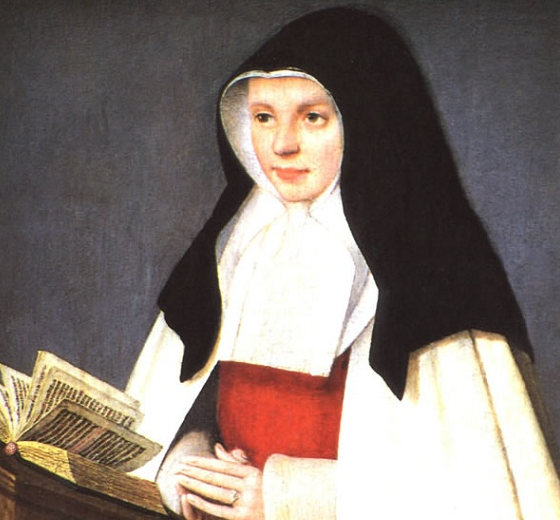




An excellent text! I loved the story of this princess.
Glad you loved it!